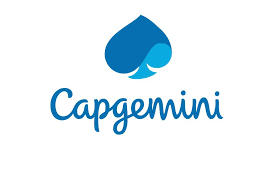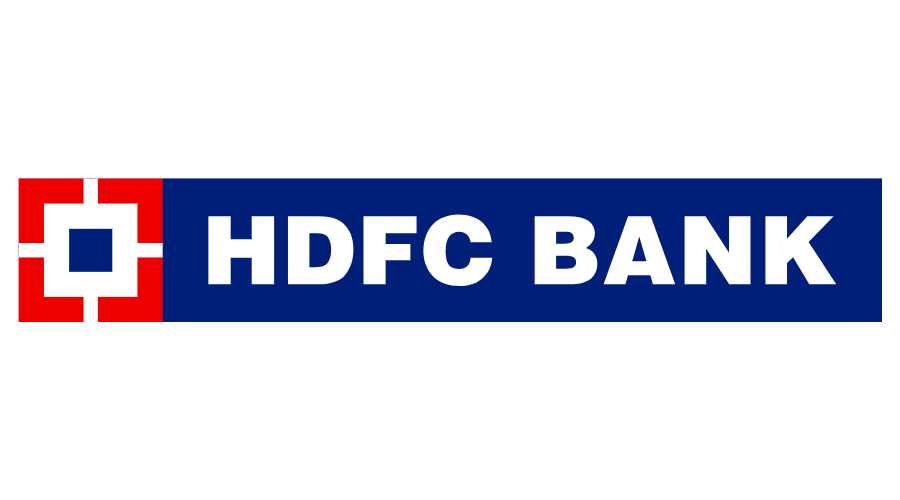Java Servlets Training (beginner to advanced)
Comprehensive course on Java Servlet with practical examples and coding on the go. Develop useful web-based applications

Lectures -31
Duration -12.5 hours

30-days Money-Back Guarantee
Get your team access to 10000+ top Tutorials Point courses anytime, anywhere.
Course Description
A warm welcome to the Java Servlets course by Uplatz.
A Servlet is a Java Programming language class that is used to extend the capabilities of servers that host applications accessed by means of a request-response programming model. Although servlets can respond to any type of request, they are commonly used to extend the applications hosted by web servers. It is also a web component that is deployed on the server to create a dynamic web page.
Servlet Technology resides at server side and it generates dynamic web page, used to create web application. Java Servlets are programs that act as a middle layer between a requests coming from a Web browser / HTTP client and databases or the applications on the HTTP server.
Servlet is a Java class that runs inside the container. It allows you to process the HTTP request and generate dynamic web pages, but it's more Java then HTML like you need to code HTML inside Java, which is both erroneous and not recommended. Servlet is mainly used as a Controller in web applications created using the MVC design pattern. One of the famous examples of that is the DispatcherServlet of Spring MVC framework, which acts as a front controller. Its job is to receive request and process it, but the view generate or dynamic web page generation functionality is passed down to JSP. Though it provides the data that need to be shown in JSP, which makes the view part of the Model View Controller (MVC) design pattern.
Before servlets, we had CGI i.e. Common Gateway Interface. It is a standard way for a Web server to pass a user’s request to an application program and receives the response to forward to the user. When the user requests a Web page, the server sends back the requested page. However, when a user fills out a form on a Web page and sends it in, it is processed by an application program. The Web server typically passes the form information to a small application program. This program processes the data and sends back a confirmation message. This process of passing data back and forth between the server and the application is called the common gateway interface (CGI). It is part of the Web’s Hypertext Transfer Protocol.
This practical, application-oriented Java Servlets training by Uplatz teaches Java Servlets technology and shows how to use it to develop simple to complex web applications. It is intended for both the beginners as well as experienced Java (J2SE) programmers who want to build web applications or J2EE components and systems.
The Java Servlet course begins with an overview of server-side Java programming and web protocols. Then students learn the Java Servlets architecture, the request/response cycle, and servlet life cycle, and how to build interactive web applications that parse and/or generate HTML forms. Several prominent patterns for servlet application architecture are considered. Sessions are studied as a means to developing sophisticated client/server conversations over several HTML pages. Multi-tier applications are developed using servlets and JDBC for access to relational databases.
This Java Servlet training develops the important concept of the separation of programmatic and declarative development: use of configuration and context information in lieu of hard-coded values, resource locations, etc., to make the web application as portable and easy to administer as possible. The course introduces JavaBeans as a standard for business and data objects that can be shared among servlets and JSPs, and develops techniques for sharing such objects at session scope or by request forwarding. Finally, students learn how to implement filters to adapt existing servlets by pre- and post-processing the request and response.
Java Servlets - course syllabus
Introduction to WorldWideWeb
Understanding static and Dynamic webpages
How to create a HelloWorld application using servlets
Servlet interface, Generic and HttpServlet interfaces
Annotation and Xml based configuration in Servlets
Difference between Get & Post
How Servlet works (Life cycle)
Load On Startup Configuration
Request Scope in Servlets
RequsetDispatcher interface
Interservlet communication using Response.sendRedirect
ServletConfig
ServletContext
Session Tracking using cookies
HiddenFormFields
URL Rewriting
HttpSession
Filters in servlets
FilterConfig
Database connection in servlets
CRUD operations using servlets to mysql database
Events and Listeners in servlets
ServletContext Listener
HtttpSessionListener
What you will learn in this Java Servlets course
Understand and appreciate the role of Java Servlets in the overall Java 2 Enterprise Edition architecture, and as the best Java solution to HTTP application development
Use request and response objects provided to a servlet to read CGI parameters and to produce an HTML response
Develop interactive web applications using HTML forms and servlets
Manage complex conversations with HTTP clients using session attributes
Understand the role of JDBC in Java persistence code, and use JDBC for persistence in servlet applications
Preserve portability and ease of administration for a servlet application by parameterizing servlet code, using initialization parameters, properties files, and JNDI
Use JavaBeans classes to share complex business data between components
Implement filters to adapt existing servlets with new features, and to maximize the decomposition of logic between vertical business functions and horizontal facilities
Understand and manage HTTP sessions in a web application
Create servlet filters and listeners
Write pages created with JavaServer Pages technology (JSP pages)
Create easy-to-maintain JSP pages using the Expression Language and theJSP Standard Tag Library (JSTL)
Use integrated development environments (IDEs) and application serversfor Java EE development and deployment
Write servlets using the Java programming language (Java servlets)
Java Servlets: Servlet Architecture
The Java Servlet architecture includes communication interface, protocol used, requirements of client and server, the programming with the languages and software involved. Basically, it performs the below-mentioned tasks.
First, it reads the explicit data sent by the clients (browsers). This data can include an HTML form on a Web page, an applet or a custom HTTP client program. It also reads implicit HTTP request data sent by the clients (browsers). This can include cookies, media types and compression schemes the browser understands, and so forth.
After that, the servlet processes the data and generate the results. This process may require communicating to a database, executing an RMI, invoking a Web service, or computing the response directly.
After processing, it sends the explicit data (i.e., the document) to the clients (browsers). This document can be sent in a variety of formats, including text (HTML or XML), binary (GIF images), or Excel formats.
Finally, it also sends the implicit HTTP response to the clients (browsers). This includes telling the browsers or other clients what type of document is being returned
Servlet Life Cycle
The Servlet life cycle mainly includes the following four stages,
Loading a Servlet
Initializing the Servlet
Request handling
Destroying the Servlet
Java Servlets: Steps to Create Servlet
Create a directory structure
Create a Servlet
Compile the Servlet
Add mappings to the web.xml file
Start the server and deploy the project
Access the servlet
Who this course is for:
- Java Developers, J2EE and Java EE Developers
- Application Developers and Senior Java/Application Developers
- Technical Architects
- Beginners who wish to make their career in Web Development/Programming
- Lead Java Developers Spring / J2EE
- Full Stack Java Developers and Programmers
- Engineering Managers (JavaScript & Java)
- Java Developers API - Technologists
- Android Developers
- Software Engineers and Senior Software Engineers
- Individuals & Enthusiasts who wish to develop their own sophisticated web applications
Goals
Deep-dive into the world of Java Servlets
Become a top web programmer with Java Servlet programming skills
Java Servlet Architecture
Important terms related to Java Servlets
How Servlet works and Servlet Life Cycle
ServletRequest, ServletResponse, ServletConfig, and ServletContext
Steps to configure and deploy Servlet
Servlet Collaboration
Understand Java EE - Servlets, JSP, Scriptlets, JSTL, web-xml and EL
Understand static and Dynamic webpages
Create complex web applications using servlets
Servlet interface, Generic and HttpServlet interfaces
Annotation and Xml based configuration in Servlets
Difference between Get & Post
Load On Startup Configuration
Request Scope in Servlets
RequsetDispatcher interface
Interservlet communication using Response sendRedirect
Session Tracking using cookies
HiddenFormFields, Url Rewriting, HttpSession
Filters in servlets, FilterConfig
Database connection in servlets
CRUD operations using servlets to mysql database
Events and Listeners in servlets
ServletContext Listener and HttpSessionListener
Understand the basics of using Maven, Tomcat and Eclipse
Run Web Applications in Tomcat
Prerequisites
- Enthusiasm and determination to make your mark on the world!

Curriculum
Check out the detailed breakdown of what’s inside the course
Introduction to World Wide Web
1 Lectures
-
Introduction to World Wide Web 22:20 22:20
Welcome To Servlets
1 Lectures

Servlet Request
1 Lectures

Annotation and XML Configuration
1 Lectures

How a Servlet works
1 Lectures

Get & Post difference
1 Lectures

Request Dispatcher
1 Lectures

Response SendRedirect
1 Lectures

Servlet Config
2 Lectures

Servlet Context
2 Lectures

Load On Start Up
1 Lectures

Session Tracking
1 Lectures

Session Tracking Cookies
1 Lectures

Hidden Form Fields
1 Lectures

URL Rewriting
1 Lectures

HTTP Session
1 Lectures

Filters and Filter Examples
2 Lectures

Database Servlets
4 Lectures

Update Servlet Database
2 Lectures

Delete Servlet Database
1 Lectures

Events and Listeners
1 Lectures

HttpSessionListener
2 Lectures

ServletContextListener
1 Lectures

Instructor Details

Uplatz
Uplatz is a UK-based leading IT Training provider serving students across the globe. Our uniqueness comes from the fact that we provide online training courses at a fraction of the average cost of these courses in the market.
Within a short span of 6 years, Uplatz has grown massively to become a truly global IT training provider with a wide range of career-oriented courses on cutting-edge technologies and software programming.
Our specialization includes Data Science, Machine Learning, Deep Learning, Data Engineering, AWS, SAP, Oracle, Salesforce, Microsoft Azure, GCP, DevOps, SAS, Python, R, JavaScript, Java, C, C++, Full Stack Web Development, Angular, React, NodeJS, Django, IoT, Cybersecurity, BI & Visualization, Tableau, Power BI, Data warehousing, ETL tools, ServiceNow, Software Testing, RPA, Embedded Engineering, Automotive Engineering, DSP, VHDL, Microcontrollers, Electronics, Computer Hardware Engineering, MATLAB, Digital Marketing, Product Marketing, Finance, Accounting, Tally, and more.
Founded in March 2017, Uplatz has seen a phenomenal rise in the training industry providing training on 300+ self-paced courses and 5000+ tutor-led courses across 180 countries having served 1.5 million students in a period of just a few years.
Uplatz's training courses are highly structured, subject-focused, and job-oriented with strong emphasis on practice and assignments. Our courses are designed and taught by highly skilled and experienced instructors who have strong expertise in varied fields whether it be Cloud Computing, SAP, Oracle, Salesforce, Programming Languages, Web Development, or any other technology and in-demand software.
Course Certificate
Use your certificate to make a career change or to advance in your current career.

Our students work
with the Best


































Related Video Courses
View MoreAnnual Membership
Become a valued member of Tutorials Point and enjoy unlimited access to our vast library of top-rated Video Courses
Subscribe now
Online Certifications
Master prominent technologies at full length and become a valued certified professional.
Explore Now


 Updated on Jul, 2024
Updated on Jul, 2024
 Language - English
Language - English